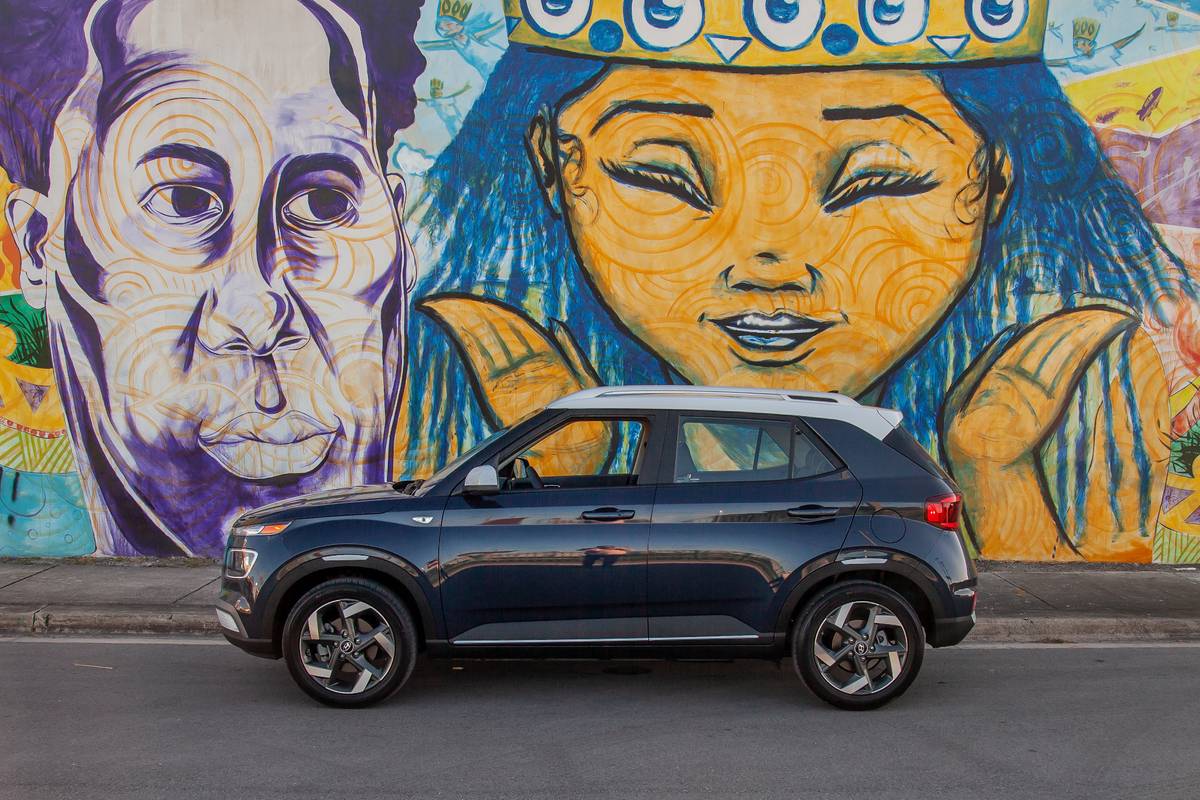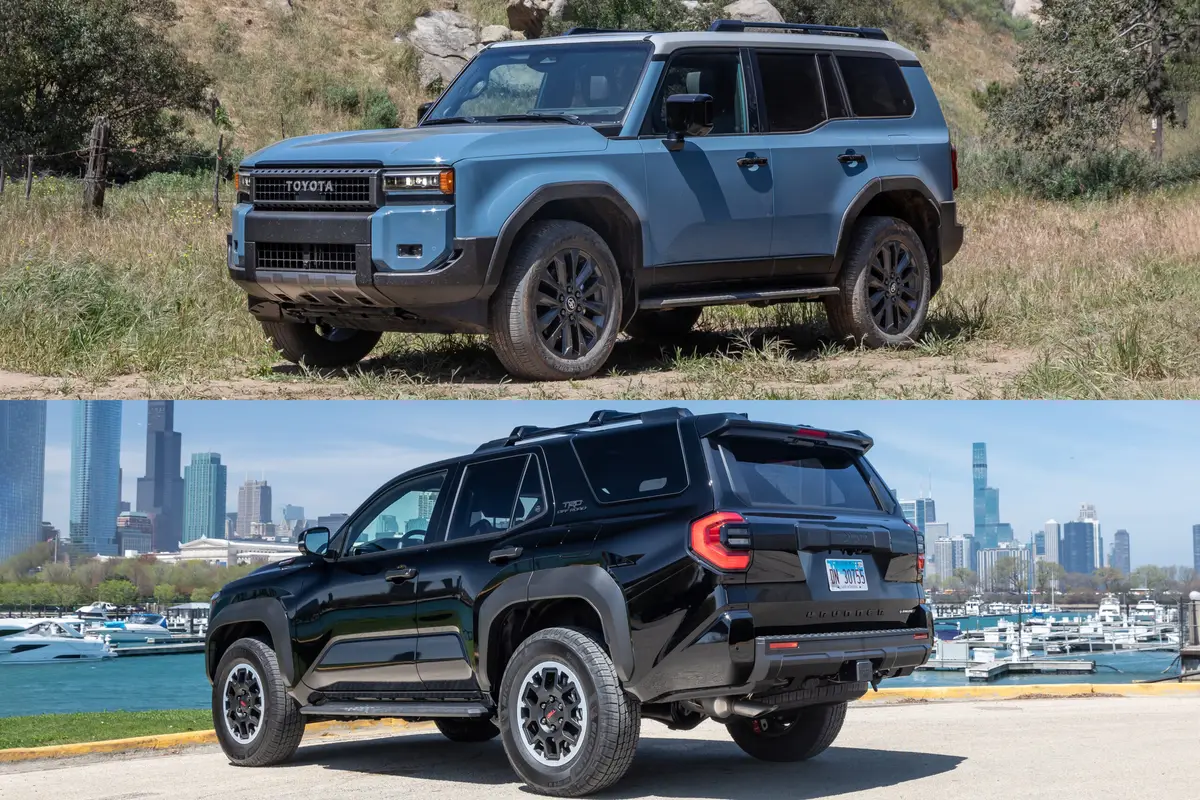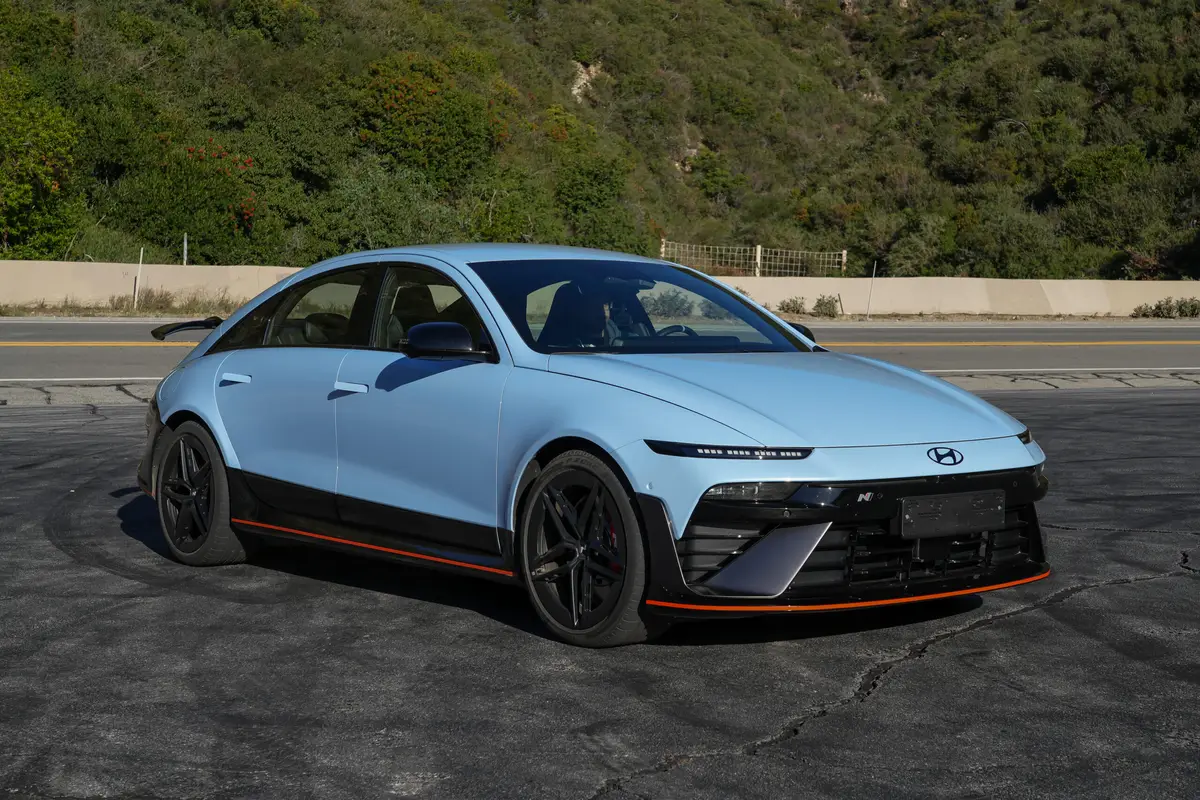How Do Car Seats Fit in a 2021 Hyundai Venue?


The verdict: Hyundai’s tiniest SUV, the Venue, stretches the very definition of an SUV with its front-wheel-drive-only platform. It was also a stretch to install car seats in its backseat. Although the Venue’s lower Latch anchors were easy to access, legroom was a major issue.
Does it fit three car seats? No.
Take a look at how the Latch system and each car seat scored below in our Car Seat Check of the 2021 Hyundai Venue.
Related: Search Car Seat Checks

A Grade
- Latch: The two sets of lower Latch anchors were partially exposed and easy to use. Three top-tether anchors sit halfway down the seatback. They’re also clearly marked and easy to use.
- Forward-facing convertible: After removing the head restraint, this seat fit well. We had no trouble installing it thanks to the Venue’s easy anchor setup.

B Grade
- None
C Grade
- Infant seat: Installation was trouble free, but legroom for our 5-foot-6-inch front passenger was a problem once the seat was installed in the row behind. Her knees were uncomfortably close to the glove box.
- Booster: We removed the head restraint to situate the booster flat against the seatback. The buckles are on hinges and slip down into upholstery pockets, making them tough to grasp. Also, the middle spot’s buckle strap covers the driver’s-side buckle and crowds the overall space for it, complicating access.
D Grade
- Rear-facing convertible: This seat was easy to install, but we had major legroom issues. We had to move the front passenger seat as far forward as it would go to make room for the car seat behind it. As such, the front passenger had to sit with her knees sideways against the glove box.
Grading Scale
A: Plenty of room for the car seat and the child; doesn’t impact driver or front-passenger legroom. Easy to find and connect to Latch and tether anchors. No fit issues involving head restraint or seat contouring. Easy access to the third row.
B: One room, fit or connection issue. Some problems accessing the third row when available.
C: Marginal room plus one fit or connection issue. Difficult to access the third row when available.
D: Insufficient room, plus multiple fit or connection issues.
F: Does not fit or is unsafe.
About Cars.com’s Car Seat Checks
Editors Jennifer Geiger and Jennifer Newman are certified child safety seat installation technicians.
For the Car Seat Check, we use a Chicco KeyFit 30 infant-safety seat, a Graco Contender 65 convertible seat and Graco TurboBooster seat. The front seats are adjusted for a 6-foot driver and a shorter passenger. The three child seats are installed in the second row. The booster seat sits behind the driver’s seat, and the infant and convertible seats are installed behind the front passenger seat.
We also install the forward-facing convertible in the second row’s middle seat with the booster and infant seat in the outboard seats to see if three car seats will fit; a child sitting in the booster seat must be able to reach the seat belt buckle. If there’s a third row, we install the booster seat and a forward-facing convertible. Learn more about how we conduct our Car Seat Checks.
Parents should also remember that they can use the Latch system or a seat belt to install a car seat, and that Latch anchors have a weight limit of 65 pounds, including the weight of the child and the weight of the seat itself.
Cars.com’s Editorial department is your source for automotive news and reviews. In line with Cars.com’s long-standing ethics policy, editors and reviewers don’t accept gifts or free trips from automakers. The Editorial department is independent of Cars.com’s advertising, sales and sponsored content departments.

News Editor Jennifer Geiger joined the automotive industry in 2003, much to the delight of her Corvette-obsessed dad. Jennifer is an expert reviewer, certified car-seat technician and mom of three. She wears a lot of hats — many of them while driving a minivan.
Featured stories



